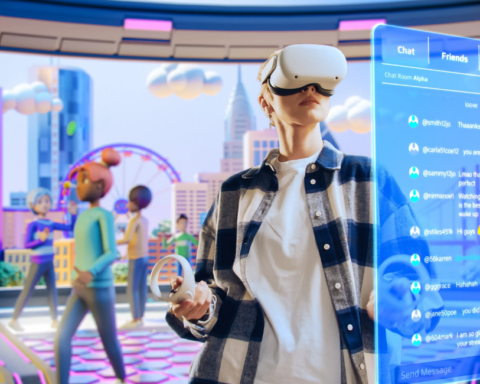The Renaissance of the Supply Chain Has Begun!
The Metaverse is a concept that has entered the zeitgeist and holds the promise of creating some fascinating new future state.
We have also been describing a future that will determine much of how corporations, economies, and institutions will operate in the future for some time. This is referred to as the Digital Supply Chain.
What is the Metaverse?
Neal Stephenson invented the term Metaverse in his science fiction novel Snow Crash in 1992. It is described as a digital universe, an integrated network of 3D virtual worlds that operate independently of our physical reality.
The Metaverse, according to Forbes, is a blend of virtual reality and mixed reality environments accessed by a website or headset, allowing users to have real-time interactions and experiences across distance.
People are currently entering the Metaverse via virtual reality technologies. Through the VR headset, you are immersed in this realistic, sensory-driven environment. Your avatar communicates virtually with other people avatars. Augmented reality, which blends both digital and real-world settings, is one example.
Early attempts to immerse people in the virtual world including the use of 3D glasses in movie theatres and, later, on home televisions. The main objective was to bring you into that world, which had limited success. Perhaps this was a motivating factor for dissatisfied techies to construct a completely immersive virtual environment.
The Digital Supply Chain
We’ve written extensively on the Digital Supply Chain because we believe it will shape much of our future for decades to come. The Digital Supply Chain will serve as the foundation for the upcoming Supply Chain Renaissance.
The Digital Supply Chain entails the use of a wide range of technologies built on a foundation of real-time electronic connectivity and visibility of the complete end-to-end Supply Chain. A Digital Supply Chain, powered by real-time connection, entails the intelligent real-time functioning of every part of the entire network.
Virtual reality, augmented reality, artificial intelligence, robotics, big data, cloud computing, blockchain, autonomous vehicles, drones, machine learning, control towers, cybersecurity, and other technologies all allow for the real-time supply chain management.
While deploying the whole suite of technologies will take time, most possibly decades, continual forward progress in capability implementation will serve to propel Supply Chain farther and more into the digital world.
The Metaverse and the Digital Supply Chain!
The advent of digital technology serves as the foundation for both the Metaverse and the Digital Supply Chain. They are, in reality, built on the same, overlapping technology.
As a result, the Metaverse can be used to shape, design, and improve the Digital Supply Chain.
Consider some of the Supply Chain applications that will be possible.
1. Simulations of Facilities
Consider using the Metaverse to build a virtual manufacturing facility, warehouse, or distribution center. Before putting a single actual shovel in the ground, you could virtually walk around these facilities, see how they would operate, and improve operations and flows.
The operations can be tested immersively for high loading periods, process breakdowns at any point, or supply disruptions, all in order to identify problem areas and correct them virtually before making physical investments.
2. Mapping the End-to-End Supply Chain Network
Imagine strolling through a virtual environment where you can see and visit every single supplier at every tier of your Supply Chain, as well as track the movement of commodities across your whole network. You would be able to see a virtual version of your end-to-end Supply Chain as if you were a giant looking out over the world.
You may monitor the movement of commodities from any location, with problem areas marked. You can test your Supply Chain by introducing problems like as manufacturing shutdowns, quality difficulties, weather-related delivery delays, and so on. This can expose issue areas in the Metaverse, allowing for modifications to be made to produce a more robust Supply Chain in the actual world.
3. Disaster Recovery Planning
Natural and man-made disasters occur all the time. While businesses may have produced Disaster Recovery plans, these plans are virtually always on paper and reflect just the opinions of the people who wrote them. Imagine having your Supply Chain mapped in the Metaverse and being able to introduce virtual crises at any, or many, places. This virtual scenario will illustrate where your Supply Chain fails.
This will help you understand how to improve the resilience and robustness of your real-world Supply Chain design.
4. Peak Load Forecasting
Anyone working in the ECommerce or Retail business is aware that the Black Friday and Cyber Monday period represents a level of demand on your Supply Chain that can be 5-10 times higher than at any other time of year. However, this only happens for a few months out of the year.
The problem is to build a physical and resource capacity capable of handling the peak season while also being able to drastically reduce it for the rest of the year. This is a difficult task.
Imagine being able to view how your Supply Chain functions during peak conditions, from order administration to fulfillment to distribution and delivery, but in a virtual world. You can virtually increase the levels till your Supply Chain fails. This will assist you in determining where to strengthen the skills in your actual Supply Chain.






